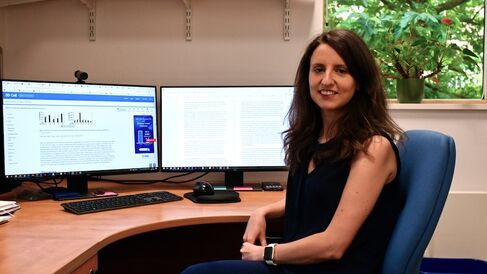Iva Tchasovnikarova

Genetic interrogation of epigenetic pathways.
Epigenetic modifications of DNA, RNA and histones are important regulators of all DNA-templated processes, including transcription, DNA repair and replication. Disruption of these epigenetic pathways is therefore commonly observed in a variety of human conditions, such as developmental disorders and cancer. The reversible nature of these disruptions has made epigenetic regulators attractive targets for therapeutic manipulation. However, a detailed understanding of the fundamental biology underlying these epigenetic mechanisms is still needed to delineate the optimal targets for future therapeutic manipulation.
We use high-throughput genetic technologies, such as CRISPR/Cas9 forward genetic screens, to discover novel factors involved in chromatin regulation. To dissect the mechanism of action of these factors, we take advantage of established genetic and biochemical approaches. In addition, a major focus of the lab is to develop novel genetic technologies to characterise epigenetic pathways in human cells.
Research objectives
To study epigenetic pathways and the mechanisms through which these processes are corrupted by disease-associated mutations in chromatin regulators.
To understand the mechanisms utilised by chromatin modifiers to exert their function in healthy human cells.
To examine how these mechanisms are altered in human disorders in molecular detail.
Key publications
Matthews, RE et al. (2025) CRAMP1 drives linker histone expression to enable Polycomb repression. Molecular Cell 85: 2503–2516.e8. DOI: 10.1016/j.molcel.2025.05.031.
Tchasovnikarova IA et al. (2024) Competition between two HUSH complexes orchestrates the immune response to retroelement invasion. Molecular Cell 84: 2870–2881.e5. DOI: 10.1016/j.molcel.2024.06.020.
Tchasovnikarova IA et al. (2021) TRACE generates fluorescent human reporter cell lines to characterize epigenetic pathways. Molecular Cell 82: 479–491.e7. DOI: 10.1016/j.molcel.2021.11.035.
Douse CH et al. (2020) TASOR is a pseudo-PARP that directs HUSH complex assembly and epigenetic transposon control. Nature Communications, 11: 4940. DOI: 10.1038/s41467-020-18761-6.
Guillen Sacoto MJ et al. (2020) De Novo Variants in the ATPase Module of MORC2 Cause a Neurodevelopmental Disorder with Growth Retardation and Variable Craniofacial Dysmorphism. Am J Hum Gen 107: 352-363. DOI: 10.1016/j.ajhg.2020.06.013.
Timms RT et al. (2019) Differential Viral Accessibility (DIVA) identifies alterations in chromatin architecture through large-scale mapping of lentiviral integration sites. Nat Protoc 14: 153–170. DOI: 10.1038/s41596-018-0087-5.
Tchasovnikarova IA et al. (2017) Hyperactivation of HUSH complex function by Charcot-Marie-Tooth disease mutation in MORC2. Nat Genet 49: 1035–1044. DOI: 10.1038/ng.3878.
Tchasovnikarova IA et al. (2015) Epigenetic silencing by the HUSH complex mediates position-effect variegation in human cells. Science 348: 1481–1485. DOI: 10.1126/science.aaa7227.
